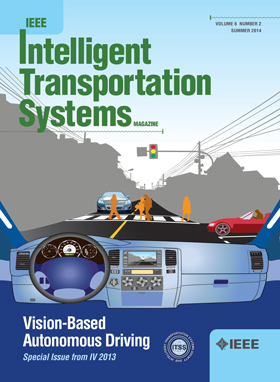飞机降落过程中飞行员性能评估的飞行过程重要性框架
IF 8.4
1区 工程技术
Q1 ENGINEERING, CIVIL
IEEE Transactions on Intelligent Transportation Systems
Pub Date : 2025-04-18
DOI:10.1109/TITS.2025.3558469
引用次数: 0
摘要
航空事故经常与飞行员的操作有关,特别是在着陆阶段。因此,准确评估飞行员在这一阶段的表现对于降低着陆风险至关重要。然而,传统的评估方法主要集中在离散的监测点上,无法捕捉飞行员在整个着陆阶段的连续和动态表现。为了解决这个问题,我们提出了一个飞行过程重要性(FPI)评估框架,该框架可以精确地确定准确的着陆时间,并捕捉飞行员的各种操作特征。它由时变重要系数(TIC)和导频特性矩阵(PCM)两部分组成。TIC开发了一个时空一致注意网络(STCAN)来对快速访问记录器(QAR)数据进行分类,用于异常事件检测。然后,通过以可解释的方式分析STCAN模型对数据的响应,确定着陆过程中不同时期的重要性。PCM通过四分位数范围推导出各种参数的理想区间,从而为每次飞行生成参数矩阵。该矩阵用于识别不同飞行员操作中异常的持续时间和强度。通过整合TIC和PCM,我们的框架计算出每次飞行的评估矩阵,量化与飞行员相关的操作风险因素。实验结果表明,STCAN算法在QAR数据处理上明显优于其他算法。FPI对飞行员的表现提供了更精确和全面的评估。特别是,我们的研究结果强调了着陆前10秒是飞机着陆的最关键时期。本文章由计算机程序翻译,如有差异,请以英文原文为准。
A Flight Process Importance Framework for Evaluating Pilot Performance During Airplane Landing
Aviation accidents are frequently related to pilots’ operations, especially during a landing phase. Therefore, accurately evaluating a pilot’s performance during this phase is crucial for minimizing landing risks. Traditional assessment methods, however, primarily focus on discrete monitoring points, failing to capture the continuous and dynamic nature of a pilot’s performance throughout the entire landing phase. To address this issue, we propose a Flight Process Importance (FPI) assessment framework that precisely determines accurate landing timing and captures the diverse operational characteristics of pilots. It consists of two components: Time-varying Importance Coefficient (TIC) and Pilot Characteristics Matrix (PCM). TIC develops a Spatio-Temporally Consistent Attention Network (STCAN) to classify Quick Access Recorder (QAR) data for anomalous event detection. It then determines the importance of different periods during the landing process by analyzing the STCAN model’s response to the data in an interpretable manner. PCM generates a parameter matrix for each flight by deriving the ideal intervals of various parameters through the interquartile range. This matrix is used to identify the duration and intensity of anomalies in operations across different pilots. By integrating TIC and PCM, our framework computes an evaluation matrix for each flight, quantifying the operational risk factors associated with pilots. Experimental results indicate that STCAN significantly surpasses other algorithms on QAR data. FPI provides a more precise and comprehensive assessment of a pilot’s performance. In particular, our findings highlight that the 10 seconds before landing to the touchdown are the most critical period of airplane landing.
求助全文
通过发布文献求助,成功后即可免费获取论文全文。
去求助
来源期刊

IEEE Transactions on Intelligent Transportation Systems
工程技术-工程:电子与电气
CiteScore
14.80
自引率
12.90%
发文量
1872
审稿时长
7.5 months
期刊介绍:
The theoretical, experimental and operational aspects of electrical and electronics engineering and information technologies as applied to Intelligent Transportation Systems (ITS). Intelligent Transportation Systems are defined as those systems utilizing synergistic technologies and systems engineering concepts to develop and improve transportation systems of all kinds. The scope of this interdisciplinary activity includes the promotion, consolidation and coordination of ITS technical activities among IEEE entities, and providing a focus for cooperative activities, both internally and externally.
 求助内容:
求助内容: 应助结果提醒方式:
应助结果提醒方式:


